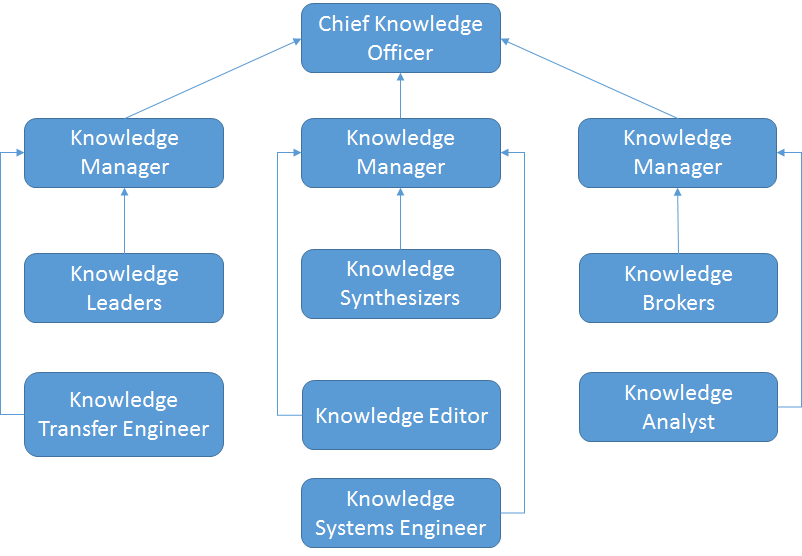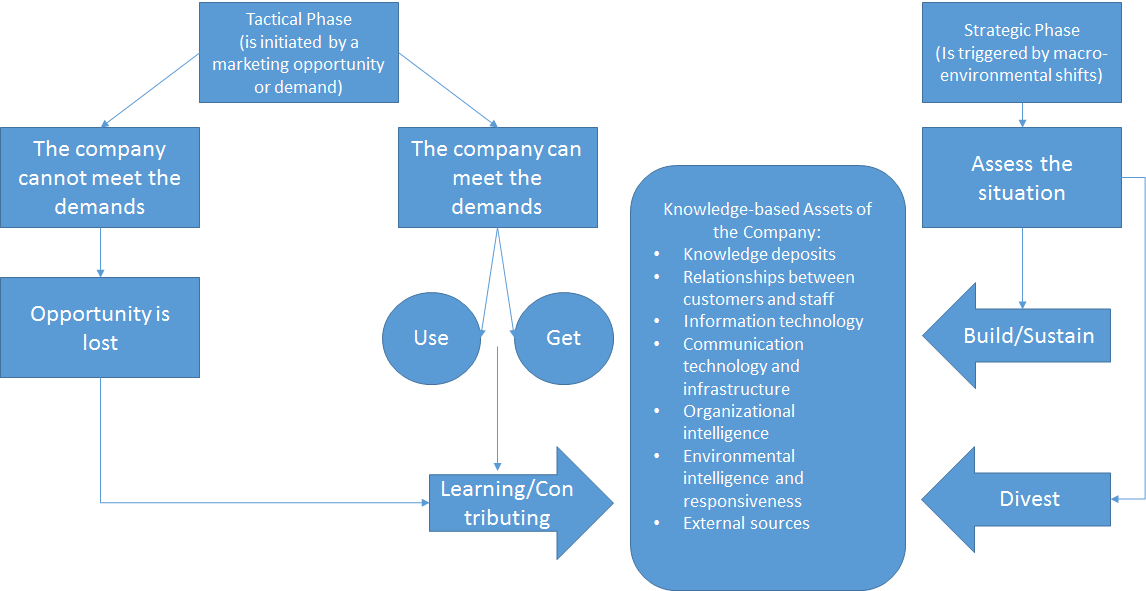Introduction
Knowledge is power. Consequently, it is also the fuel of any business. Some may argue that money is what is important in business, but no business exists without information, which is used in almost every aspect of entrepreneurship. Knowledge is used on all levels, from a practical and rudimentary level of the ground production floor to the directorial board, where major strategic decisions are made. The bigger the scope of the organization is, the larger are the amounts of information that it has to process. At some point, it becomes impossible to deal with large amounts of information. Almost every large for-profit and non-profit organization has a knowledge management department (KMD).
The purpose of the KMD is to manage the corporation’s incoming and outgoing information streams by systematically organizing the processes of acquiring, compartmentalizing, sustaining, applying, sharing, and updating the information and knowledge available to managers and employees alike in order to enhance organizational performance and create value (Frost, 2014). The purpose of this paper is to describe KMD’s organizational structure, operating models, standard procedures, and their interconnection with one another.
Knowledge Management Department’s Organizational Structure
The structure of a KMD typically varies from one company to another, depending on its need for knowledge management and the number of available resources. However, the general organizational structure of a company typically resembles the one shown below (Fuller, 2012):

- Chief Knowledge Officer is the head of the department. The purpose of the CKO is to formulate department strategies, handling its operations and staff, and influencing change within the organization (Fuller, 2012).
- Knowledge Managers are executive officers under the CKO who typically run their sub-departments and help the CKO in the implementation of the overall strategic decisions to the lower levels of the organization (Hislop, 2013).
- Knowledge Leaders are specialists who promote change in the organization by undertaking specific tasks and initiatives that are part of the overall strategy (Yip, Ng, & Lau, 2012).
- Knowledge Synthesizers – their job is to keep the knowledge available to the organization up to date and constantly record and update the available knowledge banks (Hislop, 2013).
- Knowledge Brokers – specialize in finding information and delivering it to those who need it the most (Hislop, 2013).
- Knowledge Transfer Engineer – translates the available knowledge into code or any other format acceptable for the organization, in order to facilitate its use (Hislop, 2013).
- Knowledge Editor – corrects any errors found in the knowledge databases, and recodifies it for reuse (Hislop, 2013).
- Knowledge Analyst – establishes a connection between the employees and the customers by translating user needs into knowledge requirements (Hislop, 2013).
- Knowledge Systems Engineer – a specialist that creates knowledge and information management systems (Holtshouse, 2013).
Operating Model

While there are several operational models for a KM organization, the one I chose is the Tactical and Strategic Knowledge model (Wiig, 2012). It allows the management to build, divest, optimize, and improve the knowledge assets of a company. The important questions that are asked in this model are “why” and “when.” It allows for a greater strategic focus and allows putting knowledge management into context. Aside from gathering knowledge, this model also deals with the issue of divesting knowledge, which is something that many operational models lack (Frost, 2014). KM initiatives in this model appear as a result of tactical and strategic changes within the operating environment.
Knowledge Management Processes
Operation of any knowledge management departments involves several key processes, which are as follows (Fuller, 2012):
- Knowledge detection and research – the process of identification and detection of explicit, tacit, and embedded knowledge within the organization.
- Knowledge assessment and organization – using various methods of assessing and organizing knowledge (through the use of IT methods, surveys, workgroups, etc.).
- Knowledge distribution – making the right knowledge and right knowledge sources available to those who need it at the right time.
- Knowledge use and reuse – providing a medium, through which knowledge producers, consumers, and intermediaries can use and reuse the already available knowledge.
- Knowledge acquisition – refers to knowledge that the company can obtain using external sources.
In the scope of the KMD organization, these processes would be distributed among every branch under each knowledge manager. However, some of these processes would have specific roles dedicated to them. For example, as it was stated in the organization and responsibility chart, knowledge brokers would deal with knowledge detection and research, as well as knowledge acquisition. Knowledge leaders would deal with the processes of use and reuse, while knowledge synthesizers would be occupied with knowledge assessment and organization. The minor support roles mentioned in the chart would also take on some of the responsibility and address specific tasks within the scope of the aforementioned knowledge management processes.
References
Frost, A. (2014). A synthesis of knowledge management failure factors. Web.
Fuller, S. (2012). Knowledge management foundations. Oxford, England: Butterworth-Heinemann.
Hislop, D. (2013). Knowledge management in organizations: A critical introduction (3rd ed.). Oxford, England: Oxford University Press.
Holtshouse, D. K. (2013). Information technology for knowledge management. New York, NY: Springer.
Wiig, K. (2012). People-focused knowledge management. New York, NY: Elsevier.
Yip, M. W., Ng, A. A. H., & Lau, D. H. C. (2012). Employee participation: Success factor of knowledge management. International Journal of Information and Education Technology, 2(3), 262-264.